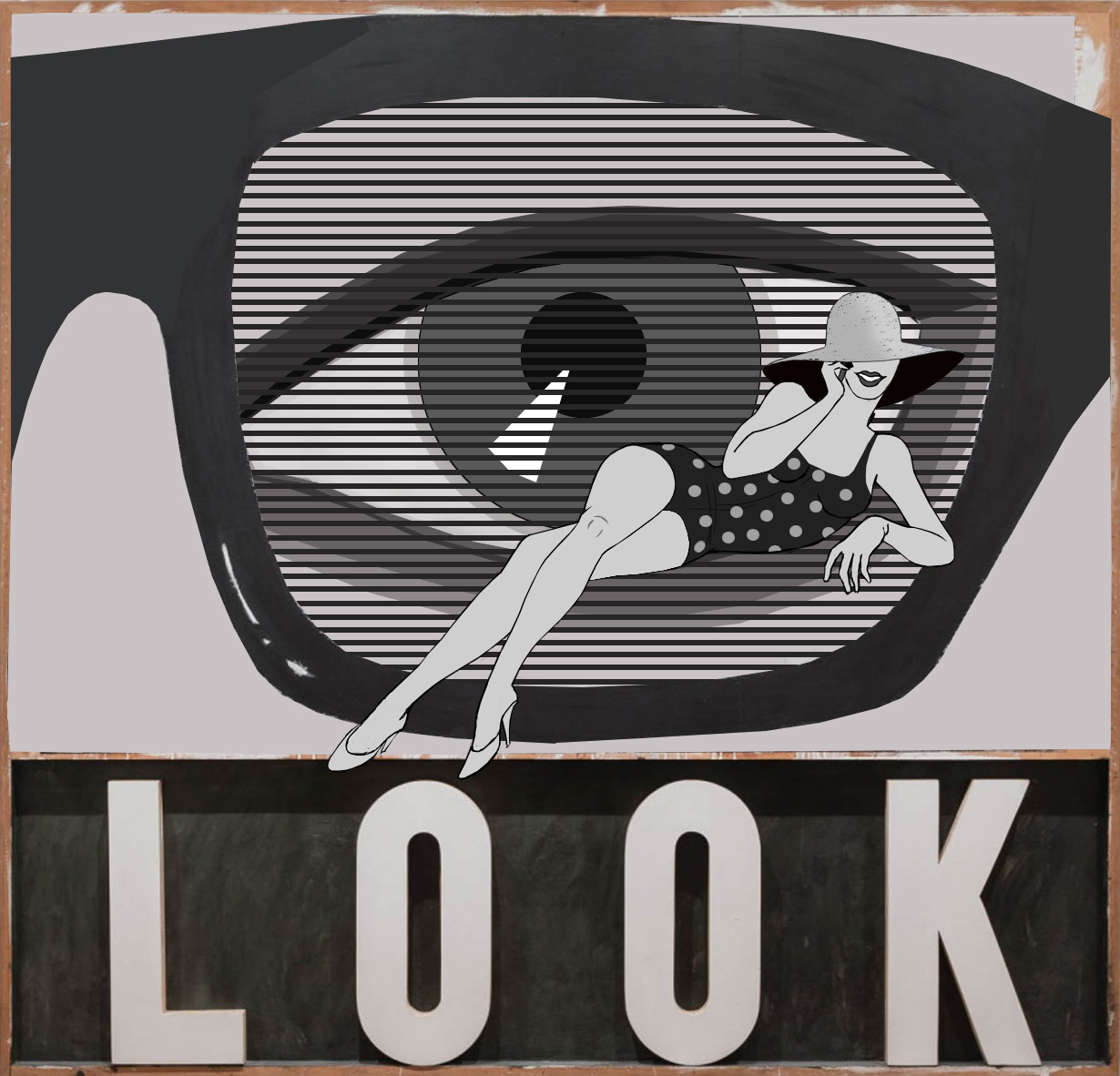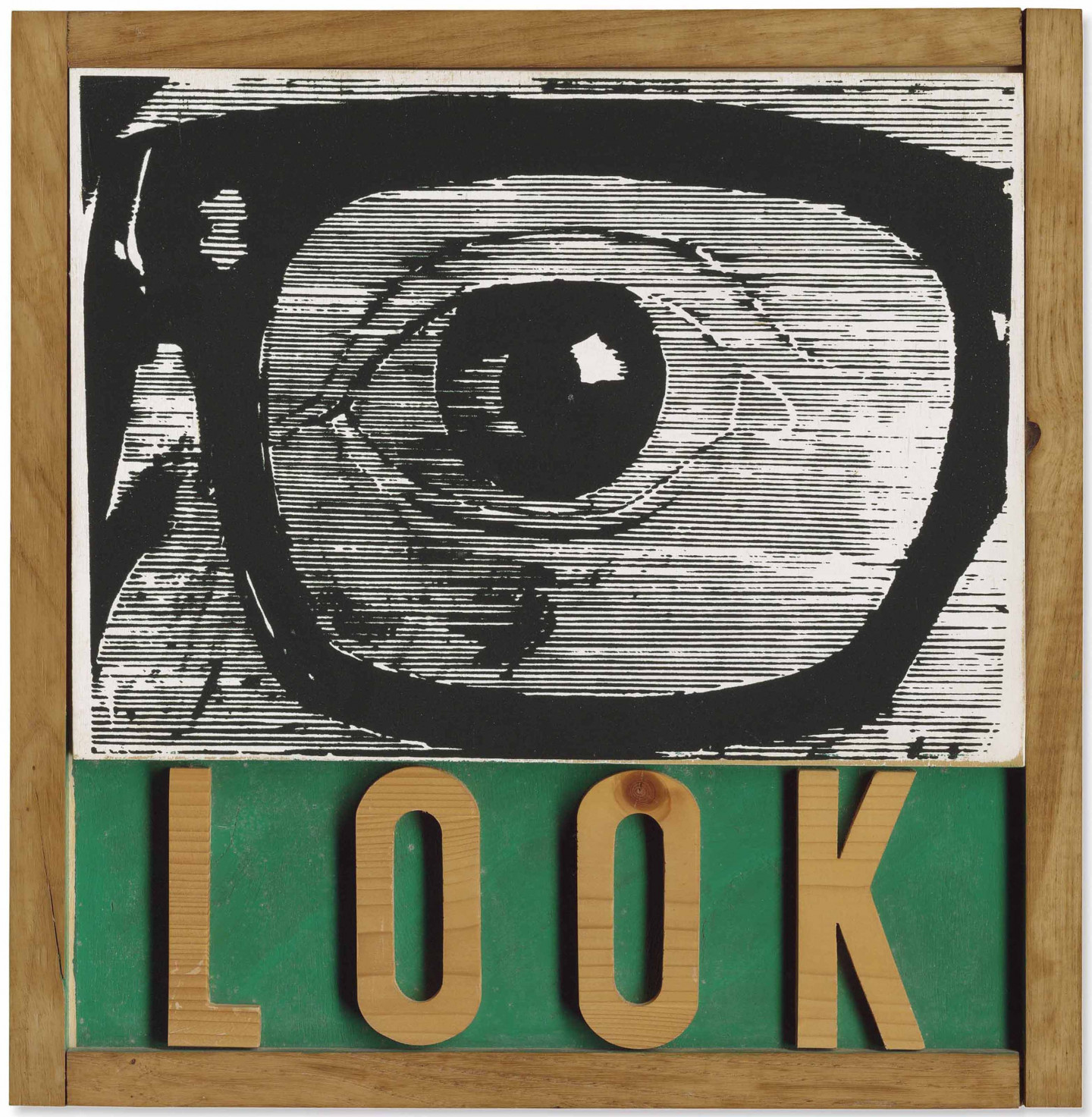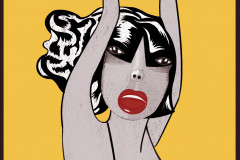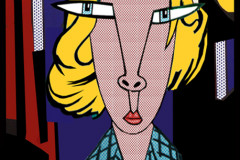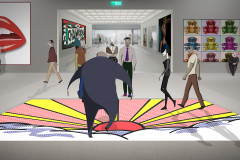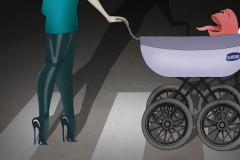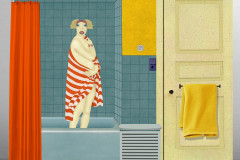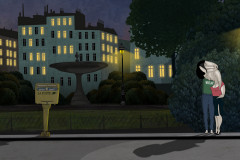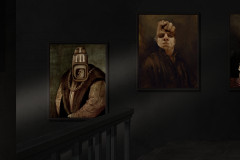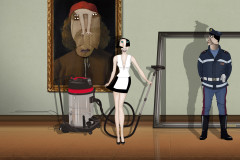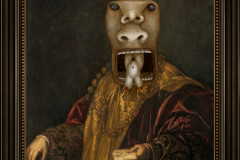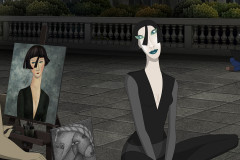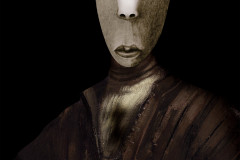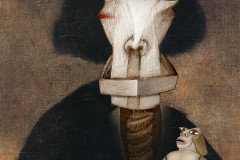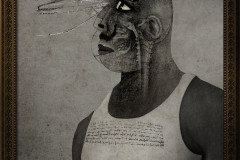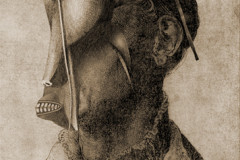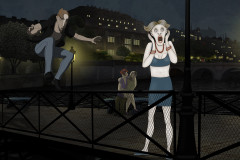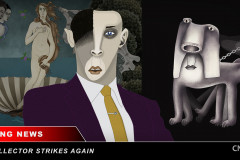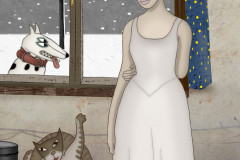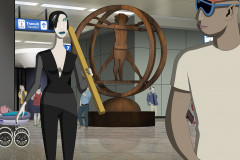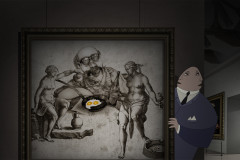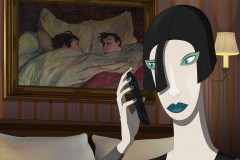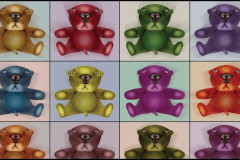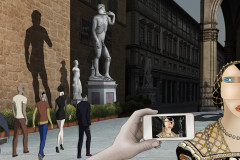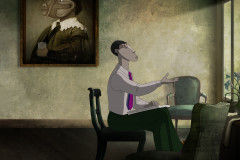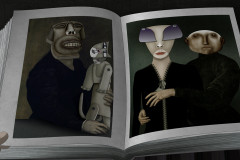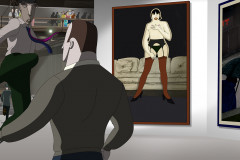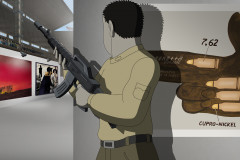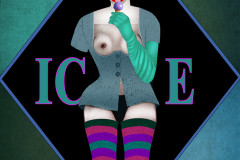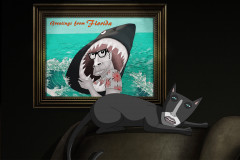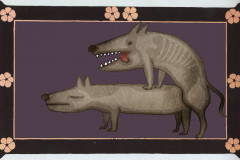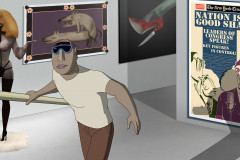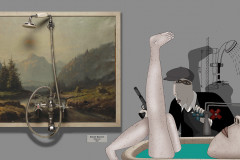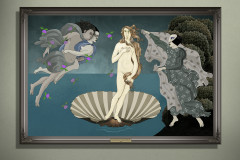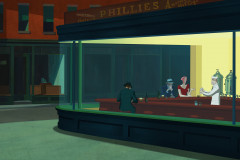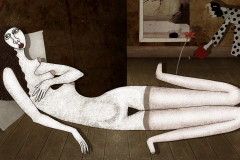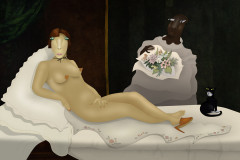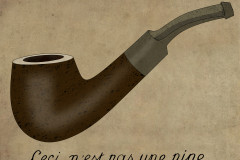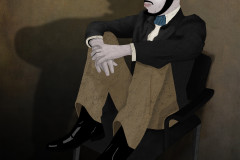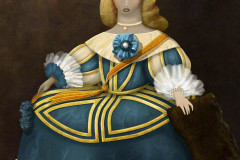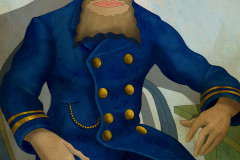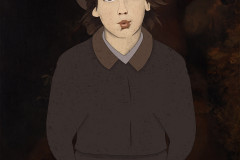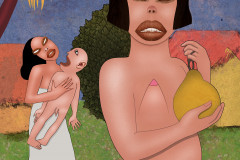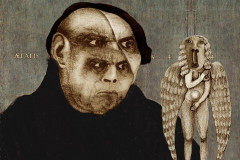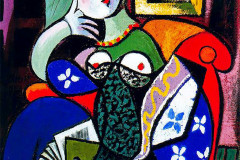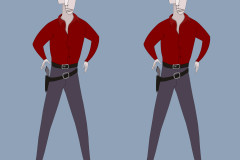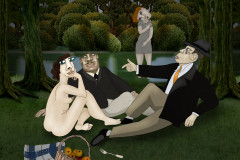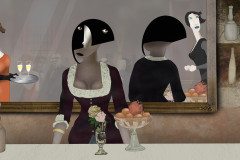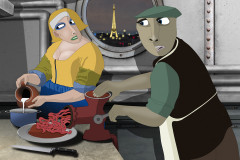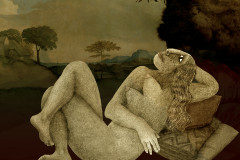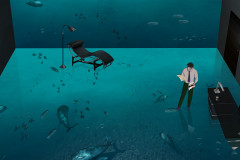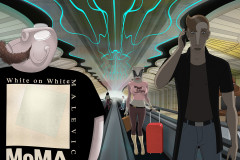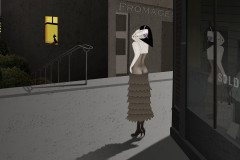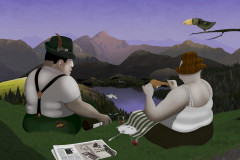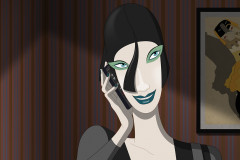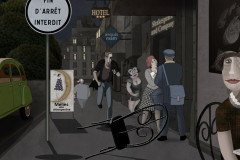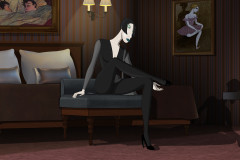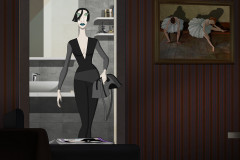Tilson, Joe (1928- ): Look!, 1964 (olaj, akril, furnérlemez, 187 x 195 x 7,6 cm, Walker Art Center, Minneapolis). Tilson az angol pop-art egyik legnevesebb alkotója, aki a médiából átvett képanyag és a sokszorosító technikák használata mellett mindvégig megőrizte a műalkotás kézműves-jellegét is. Ez a műve a filmbeli tokiói pop-art-kiállításon függ a falon, de a szemüveges szempárra (vagy annak egyikére) való ráközelítéssel sok más helyen is találkozhatunk a filmben, amelyben szemekből igazán nincs hiány.
A szobrászat és festészet határán alkotó művész a '60-as években háromdimenziós, festett fa-képeket (reliefeket) készített, amelyeken – a reklám célú képekhez vagy plakátokhoz hasonlóan - gyakran szerepelnek feliratok. „Look” - „Nézz!/Nézd!” olvasható ragasztott betűkkel a fekete-fehér fotó alapján készült szem alatt, bár az angol szó így írásjel nélkül azt is jelentheti, hogy „tekintet”. A nézés és látás a képző- és filmművészet alapmotívuma. A reneszánsztól fogva születtek olyan alkotások, melyek az érzékelésnek és megismerésnek erre módjára reflektáltak. Ide tartoznak a tükröt, tükörképet tartalmazó festmények, a szem becsapására törekvő illuzionisztikus barokk alkotások vagy épp a nagyítással játszó pop-artos munkák. Tilsont ebben a korszakában érdekelte a klasszikusnak nevezhető téma, hiszen 5 darabból álló „Érzékszervek” sorozatot is alkotott (ennek egyik darabja pont a budapesti Ludwig Múzeumban található). A „Look” c. alkotás nagy mérete, a kettő helyett egy szem látványa, a pupillán is végigvonuló fekete-fehét csíkozás elidegeníti a testtől és a személyiségtől a szemet. Ismerős pop-artos hatás ez, ilyenkor elkezdhetjük másként látni az ismerős dolgokat. Például a szemüveget (és a szemet) is inkább tükörnek – a Ruben Brandt-beli verzión élnek is ezzel a lehetőséggel az alkotók: egy kalapos nőalak „ül a tekintetben”.
Tilson, Joe (1928–): Look!, 1964 (oil, acrylic, plywood, 187 x 195 x 7.6 cm, Walker Art Center, Minneapolis). One of the leading figures of British pop art, Tilson combined imagery borrowed from the media and reproducible techniques with a persistent emphasis on the handcrafted nature of the artwork. This piece appears on the wall of the Tokyo pop art exhibition in Ruben Brandt, Collector, but the close-up of the eyeglass lens (or one of them) recurs throughout the film—which, indeed, is overflowing with eyes.
Tilson, working at the boundary of painting and sculpture, created painted wooden reliefs in the 1960s that often featured text—similar to posters or commercial images. “Look” is spelled out in applied letters beneath the black-and-white photo-based image of an eye. Without punctuation, the word in English can also mean “gaze” or “look” as a noun. Vision and seeing are fundamental motifs in both visual and cinematic art. Since the Renaissance, countless works have reflected on perception and the act of looking—whether through depictions of mirrors and reflections, the visual illusions of Baroque painting, or the scale distortions of pop art.
Tilson was drawn to this classical theme during this period, even creating a five-part series titled The Senses (one of which is in the Ludwig Museum in Budapest). In Look!, the large scale, the choice to show only one eye instead of a pair, and the black-and-white striping that runs across the pupil all serve to dehumanize and detach the eye from the body and the individual. This alienation is a familiar effect in pop art, prompting viewers to begin seeing familiar things differently. For example, the eye (and the eyeglass) becomes more like a mirror—an idea taken further in the film’s version, where a woman in a hat is shown “seated” inside the gaze.






